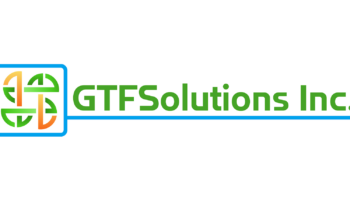Chatbot technology is rapidly advancing and becoming more and more popular. A chatbot is a computer program that simulates human conversation, allowing users to interact with automated dialog systems via text or voice commands. This type of technology has applications in many different fields, including customer service, healthcare, finance, education, and entertainment. In this article, we will explore the history of chatbots, how they work, their potential uses, and benefits for business owners and consumers alike. We will also discuss the challenges associated with developing and deploying effective chatbot systems.
Benefits of Using Chatbots
Chatbots are an increasingly popular technology for businesses to use as they offer a number of benefits compared to traditional customer service methods.
Firstly, chatbots provide customers with more convenience and flexibility. They are available 24/7, so customers can get answers to questions or solutions to problems without needing to wait for a response from customer service representatives. Furthermore, they can be accessed easily anywhere and at any time, making it convenient for customers who may be in different time zones than the business’s physical location.
Secondly, chatbots are cost-effective when compared with other customer support options such as hiring additional personnel. Businesses do not need to pay salaries or benefits for chatbot workers since they are automated software programs that require minimal maintenance costs as well.
Insight into the Chatbot Industry
The chatbot market is growing rapidly and exponentially. With advances in Artificial Intelligence (AI), more and more businesses are turning to automated bots to improve customer service and provide greater personalized experiences. The Global Chatbot Market was valued at USD 3.3 billion in 2020 and it is projected to reach USD 14.8 Billion by 2031 with an increasing CAGR (24.6%) over the forecast period.
Chatbots are being used across various industries such as banking and financial services, healthcare, e-commerce, retail & hospitality, media and entertainment, automotive and transportation, among others. The increasing adoption of AI-driven automation solutions for customer support activities along with rising investments in AI technology has been driving the growth of the chatbot market globally. Additionally, rising demand from SMEs for cost effective automation solutions is leading to an increase in demand for chatbots among these organizations.
Chatbots enable you to communicate online via text or to talk 24/7 and can also be built using Artificial Intelligence (AI) and Machine Learning algorithms. This allows a conversation with the user to happen naturally via text, website, or mobile app. Natural Language Processing is a common feature in chatbots, and Yellow.ai, a provider of conversational AI platforms, announced plans to raise USD 78.1 million to expand its AI-based chatbot platform using Natural Language Processing. It is exactly due to the increasing use of Artificial Intelligence that chatbots are expected to grow in the market.
Many enterprises have become global digital businesses through mobile analytics, cloud platforms, social analytics, and mobile analytics, and as such, many brands and publishers now use bots in their messaging and collaboration channels, such as CNN, HP, and 1-800 Flowers. These factors will drive market growth over the forecast period.
The growing demand for instant customer support is driving global chatbot market growth
Chatbots are the best way to offer customer service regardless of where you live and they allow companies to reduce business hours and enable customers to contact the best customer service available to solve their problems. Chatbots can also mimic human conversation, and thus many companies use chatbots to enhance live chat customer support channels. These factors will drive the global chatbot market’s growth over the forecast period.
North America was the dominant global chatbot market accounting for 48.3%. Asia Pacific, Europe, and Latin America followed.
Chatbots are always evolving, and some chatbots don’t understand customer intent. App program interfaces are software tools that allow users to use standard chatbot services without adding functionality, however, these tools are often not able to meet specific user requirements. Chatbots can be used to assist customers if they ask the right question, but if chatbots cannot answer customer questions, they will not be able to understand customer intent. These factors will limit the global chatbot market’s growth over the forecast period.
The market for chatbots is expected to be limited by a lack of awareness of their benefits during the forecast period.
Chatbots are gaining significant traction within enterprises in developed countries like the U.S. and Canada. Still, many businesses in emerging countries like South Africa or China are unaware of this technology. Chatbot installation is expensive for small and medium-sized companies in emerging countries which will restrict global chatbot market growth during the forecast period.
Suggested Reading: How much is the Chatbot Platform Tools Market worth?
The healthcare sector is seeing significant growth
Because of their widespread adoption, chatbots have improved customer satisfaction. Healthcare providers continue to work with chatbot companies to serve patients better, seeing as patients spend an average of 30 minutes searching for the right service at their local hospital, and nurses spend an average of 1 hour trying to find the right doctor.
Chatbots are used by leading health systems to facilitate seamless patient scheduling and conversational discovery of their services as they make it easy for providers to find specialists and arrange referrals using conversational AI agents. The Giant chatbot assists patients in understanding their symptoms and connects them with doctors who can diagnose and prescribe medications. The company reported in March 2019 that it had helped more than 750,000 Latin American patients undergo a prediabetes screening.
Chatbots can be used by healthcare providers to engage patients regarding their inpatient procedures, chronic conditions, and diabetes. The variety of advice and services on offer can increase patient satisfaction and reduce readmissions. These include medication reminders, lifestyle changes, and mood tracking.
Healthcare providers can benefit from chatbots as they make it easy for patients to connect with their providers and provide convenience. Northwell Health launched chatbots to help patients navigate their oncology treatment. Premera Scout, a chatbot created to assist patients in understanding the benefits of their care, has been launched by Premera Blue Cross. The Mayo Clinic is also studying voice-activated chatbots and is exploring further technology.
Mobile apps that use AI to analyze images and chatbots are growing in popularity on the mobile market. Babylon, an AI-based mobile app, is one example. It allows users to chat with an intelligent chatbot to share their symptoms with a doctor.
Recent Development
April 2020: IBM Watson Assistant chatbots have helped governments, hospitals, and academic institutions use AI for crucial data and information.
February 2020: Creative Virtual has partnered with Spitch AG (a Swiss leader in enterprise speech solutions). Both companies could combine their best-of-breed technologies to provide innovative self-service options for customers. Spitch’s voice technology is combined with Creative Virtual’s VPerson natural language chatbots to create a market-leading voice bot.
OTHER GOOD SOURCES OF INFORMATION
AI Chatbot Platform Market Demonstrates A Spectacular Growth By 2031
Global Chatbot Market Is Poised To Value Over USD 14.8 Billion By 2031 | CAGR 24.61%



